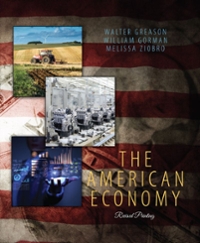every information is in the pictures below.
https://media.pearsoncmg.com/ph/bp/bp_stock_econometrics_3/empirical/empex_tb/cps08.xlsx
https://media.pearsoncmg.com/ph/bp/bp_stock_econometrics_3/empirical/empex_tb/CPS08_Description.pdf
Open the Excel data set about some young workers (aged 25 to 34), CPS08, described in Empirical Exercise 4.1. The variables are described in the Word file, CPS_Description.docx. (1) Regress average hourly earns (AHE) on age, female and bachelor. If age increase from 45 to 46, by how much is AHE expected to change? O A. $0.635 O B. $0.058 O C. $0.585 O D. cannot be determined due to the range of age in this sample (2) Re-run the regression inpart (1) but use the natural logarithm of AHE as the dependent variable. The effect on an increase in age from 25 to 27 is? O A. 0.273 percent O B. 5.47 percent O C. 2.73 percent O D. 0.547 dollars(3) Re-run the regression inpart (2) but use the natural logarithm of age (In age) instead of age. Remember the dependent variable is the Ln(AHE). The expected change in AHE given an increase in age from 28 to 29 is O A. 2.29 ercent O B. 2.29 dollars O C. 2.26 percent O D. 2.87 percent (4) Re-run the regression inpart (2) but add the square of age to the model (i.e., include both age and age2). Remember the dependent variable is the Ln(AHE). What is the expected AHE of a 30-year old woman, without a college degree? O A. $19.03 O B. $13.33 O C. $12.40 O D. $26.23(5) Based on your results in part (4) you would conclude that the quadratic in age is O A. an unnecessary addition because the coefficient on age2 is not statistically significant at the 5% level O B. an appropriate functional form because the coefficient on age2 is statistically significant at the 5% level O C. an unnecessary addition because the natural logarithm of age used in part (3) is superior O D. an appropriate functional form because the sum of the coefficients age2 and age2 is larger than the coefficient on age when entered alone as in part (2) (6) Based on part (4), test the following: Ho:Page=page2=0. Based on this test you would A. Do not reject Ho because the Fact is smaller than the critical of F2,7706 O B. Do not reject Ho because the t-statistic for each coefficient is less than 1.96 in absolute value. O C. Reject Ho because the Fact = 130.9 which is larger than the critical of F 2,7706 O D. Reject Ho because the Fact = 107.2 which is larger than the critical of F2,7706(7) Age is a rough proxy for experience. It has been proposed that women of the same age and maybe the same experience as men earn less every year they age. Regress AHE on bachelor, female, age and the interaction of age and female. Based on this regression you conclude that O A. Women's wages increase 34.92% less than men's wages for every increment in age O B. Women's wages increase 1.68% less than men's wages for every increment in age O C. Women's wages increase 0.35 dollars less than men's wages for every increment in age O D. Women's wages increase 1.68 dollars less than men's wages for every increment in age (8) Based on the results in part (7), there is statistical support for the proposition that women's wage increase less than men's wages for each year that they age. O A. True, the coefficient on the interaction term is negative and statistically significant O B. False, the coefficient on the interaction term is negative and statistically significant O C. False, the coefficient on age is positive and statistically significant O D. True, the coefficient on the interaction term is statistically insignificant(9) Based on the results in part (7), the expected wage of a 40-year old man without a bachelor's degree is O A. 24.36 O B. 32.41 O C. 25.10 O D. 3.30











